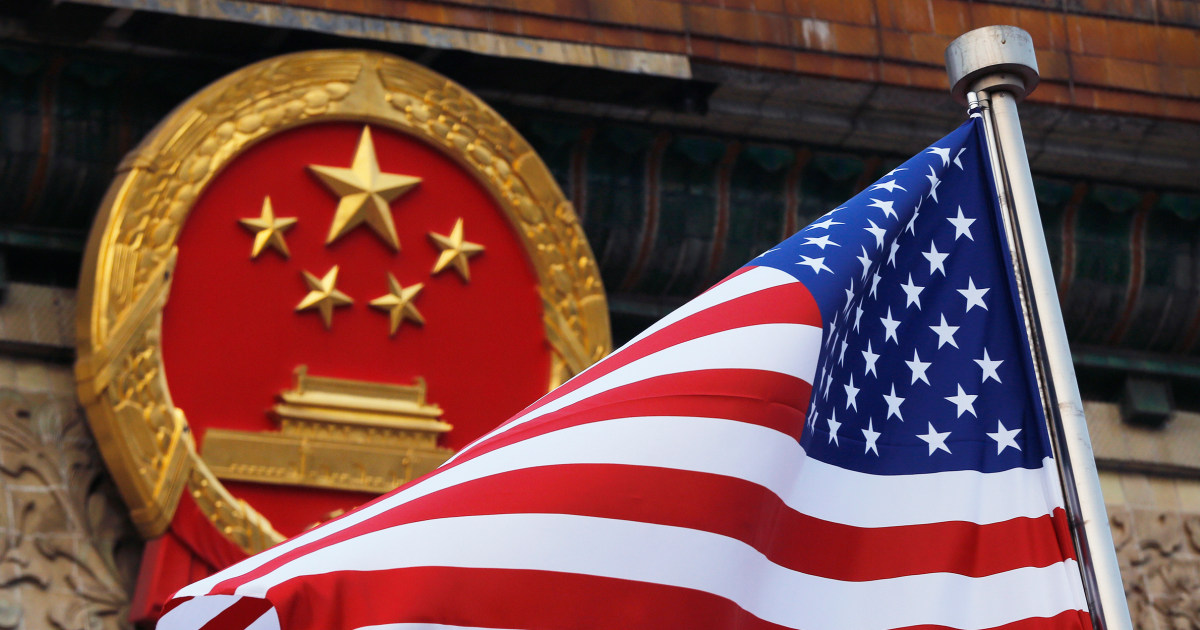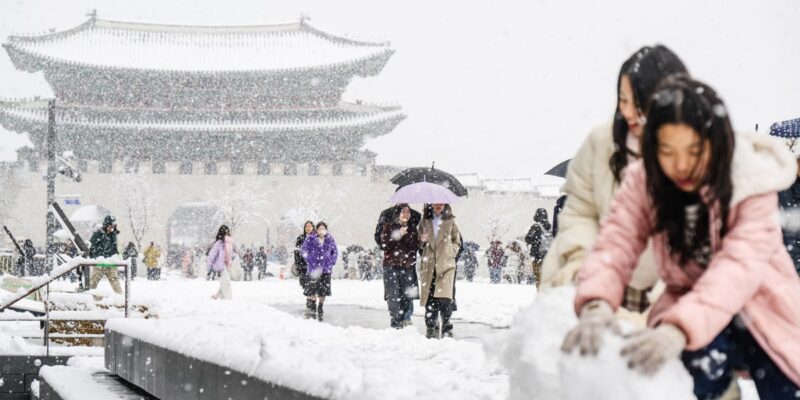
For some in South Korea’s capital, Seoul, the heavy snow brought a winter wonderland, scenes reminiscent of a picture postcard. For others it was fatal.
Armed with umbrellas and wrapped up in warm clothing, some braved the cold to walk around the grounds of the city’s ancient Gyeongbokgung Palace.
At the same site, several young women wore traditional hanbok dresses to pose for selfies despite the frigid conditions.
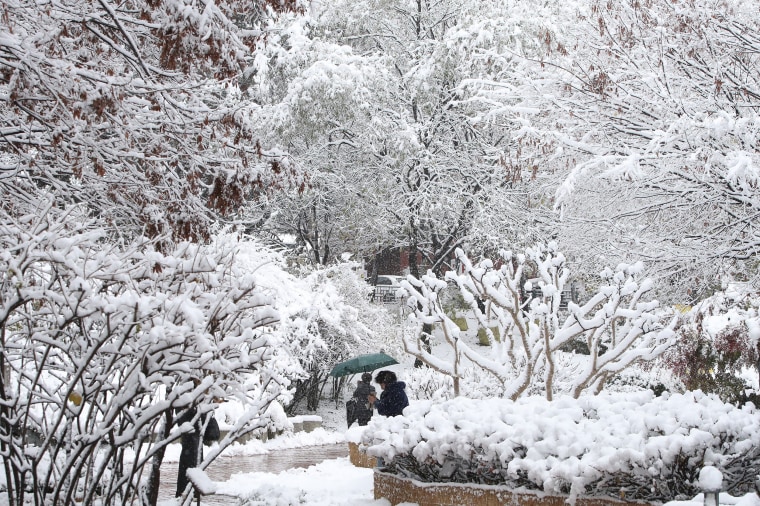
Chung Sung-Jun / Getty Images
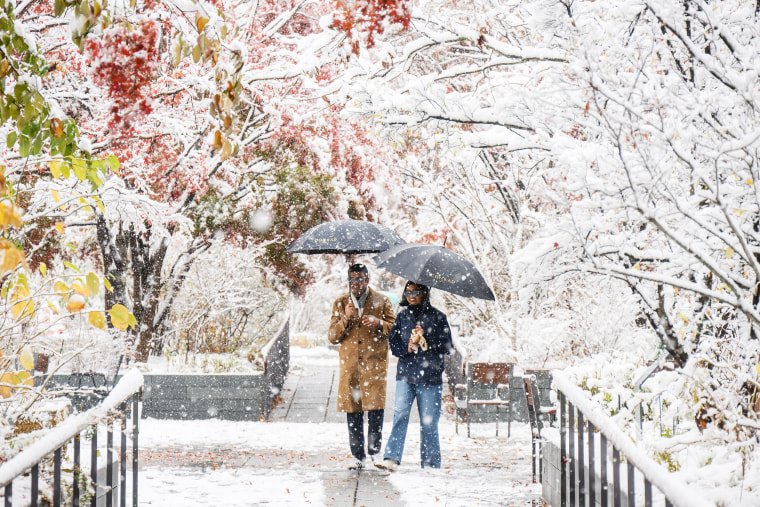
Anthony Wallace / AFP – Getty Images
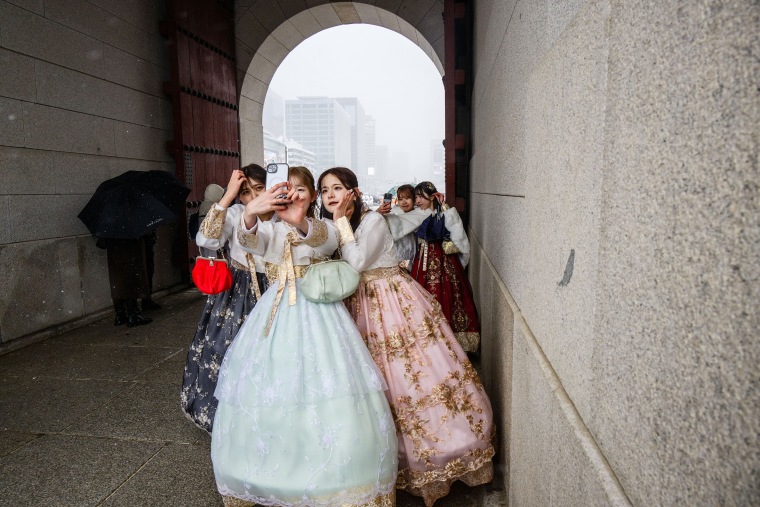
Anthony Wallace / AFP – Getty Images
This week’s snow was the third-heaviest in Seoul since records began in 1907, the Yonhap news agency reported Thursday, citing data from the city. More than 16 inches had piled up, it said.
And with it came travel chaos as dozens of flights were canceled, ferry operations were suspended, and roads were an icy mess.
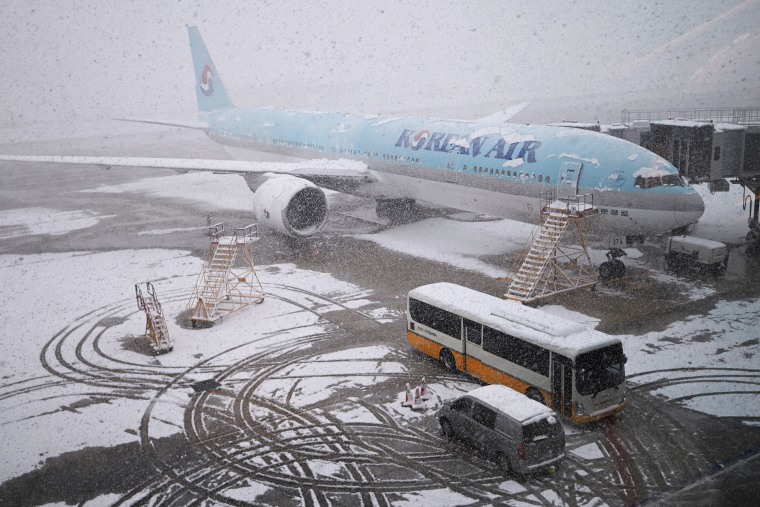
Jung Yeon-Je / AFP – Getty Images
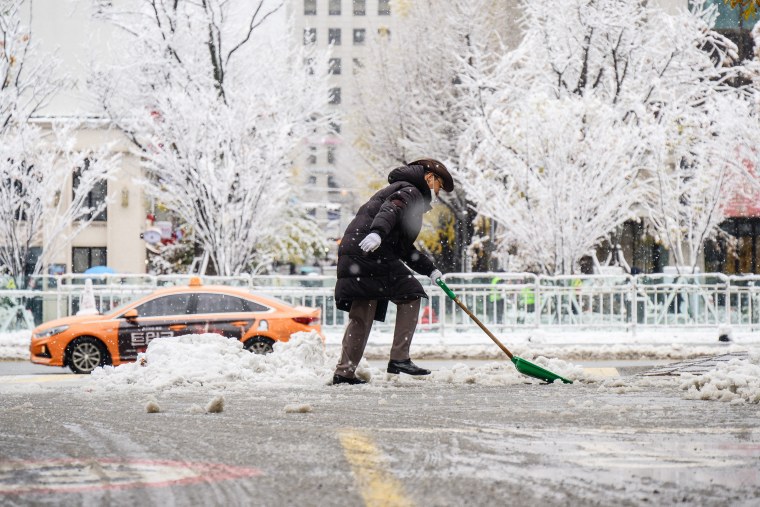
Anthony Wallace / AFP – Getty Images
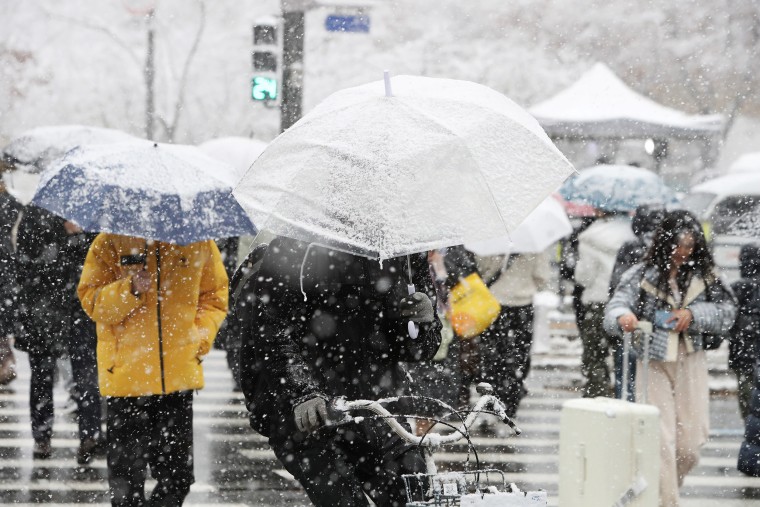
Chung Sung-Jun / Getty Images
Traffic accidents on highways east of the capital killed at least two people, and police told Reuters that 11 people were injured Wednesday evening in a 53-vehicle pileup on a highway in the central city of Wonju. They were among five people reported dead.
Hundreds of schools were also shuttered by the unusually heavy November snow, which has been attributed to the warmer-than-usual temperatures of seawaters west of the Korean peninsula encountering currents of cold air.







